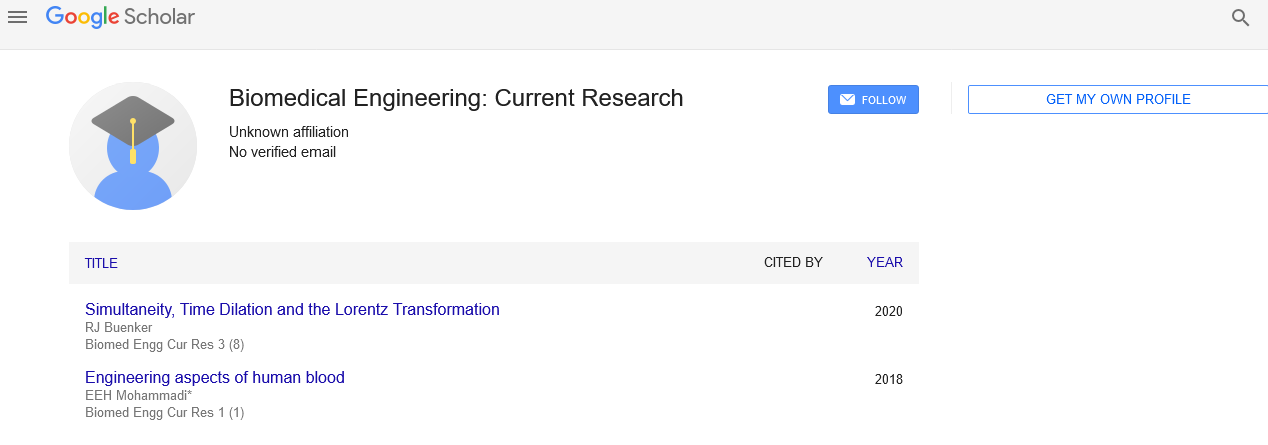Pharmaceutical engineering's potential in healthcare
Received: 20-Jan-2022, Manuscript No. pulbecr-22-4561; Editor assigned: 22-Jan-2022, Pre QC No. pulbecr-22-4561 (PQ); Reviewed: 15-Feb-2022 QC No. pulbecr-22-4561(Q); Revised: 28-Feb-2022, Manuscript No. pulbecr-22-4561 (R); Published: 10-Mar-2022, DOI: 10.37532/pulbecr.22.4(1).03
This open-access article is distributed under the terms of the Creative Commons Attribution Non-Commercial License (CC BY-NC) (http://creativecommons.org/licenses/by-nc/4.0/), which permits reuse, distribution and reproduction of the article, provided that the original work is properly cited and the reuse is restricted to noncommercial purposes. For commercial reuse, contact reprints@pulsus.com
Abstract
The healthcare industry is undergoing a transformation. Healthcare corporations are being forced to rethink their competitive strategy due to unmet medical demands, an ageing population, growing healthcare expenses, and a lack of pharmaceutical pipelines. In addition, customers are becoming more involved in healthcare. Patients are becoming more informed and aggressive in their healthcare decisions, increasing the pressure on the sector to reduce costs via innovation. The healthcare industry, which includes pharmaceutical, biotechnology, and medical device companies, as well as government agencies like the Food and Drug Administration (FDA), healthcare providers, insurers, and consumers, is a dynamic and unique entity that is rapidly moving toward highly automated and electronic environments in which the storage, management, and use of complex data is critical to success. Pharmaceutical firms are at the core of the healthcare debate in the United States. The industry is reorganizing, consolidating, and reevaluating its competitive tactics in response to market and regulatory factors. The cost of bringing a single new medicine to market has continuously risen to between $500 and $800 million. High failure rates of other candidates owing to effectiveness and safety issues account for up to 75% of the total cost of any commercialized medicine.
Introduction
The high risk of drug development, all levels of the organization are under heightened pressure to cut costs and boost productivity. Pharmaceutical businesses are aggressively exploring for novel solutions to these complex problems, from spotting candidate failures earlier in the research and development (R&D) process5 to ensuring manufacturing compliance with federal requirements and boosting efficiency. Technical and scientific decisions are increasingly being made in conjunction with financial, legal, and marketing considerations. Pharmacogenomics may be altering corporate strategy away from developing and creating blockbuster pharmaceuticals and toward techniques that target smaller patient populations with safer and more effective treatments. As biotech products become a larger part of many firms’ pipelines, genomics and other biotechnology techniques are beginning to make their way into huge pharmaceutical corporations. Biotechnology’s merger with the pharmaceutical business, on the other hand, would necessitate considerable modifications in R&D and production practices. Quality and efficiency must be integrated into every aspect of medication discovery, development, and manufacturing, according to industry experts. By integrating a risk strategy through continuous assurance procedures, new FDA efforts are improving quality and efficiency. Programs including quality manufacturing operations, risk assessment, and risk management are being used to assist avoid the creation of low-quality products. Integration of research, development, and production, as well as improved engagement between business, academia, and government, are all ways to boost healthcare efficiency. The need for new cross functional scientists and engineers to solve challenging and complicated challenges is growing as the industry strives to increase product quality and process efficiency. Pharmaceutical scientists and engineers nowadays work in the pharmaceutical and biotechnology industries. To educate and develop the healthcare industry’s future technical leaders, new and novel graduate research and training programs in Pharmaceutical Engineering are required. These programs lay the groundwork for acquiring cross functional abilities in engineering, life sciences, regulatory, and management in the pharmaceutical, biotechnology, and medical device sectors. Students should be exposed to all elements of the healthcare business early in their careers through academic and practical training, with opportunities to learn from representatives of industry, academia, and government. Students will have a greater understanding of the complexity inherent in an ever-changing, technology-driven environment as a result of this experience. Practical training in discovery, process development, formulation, and manufacturing can help students improve their technical expertise in the pharmaceutical and biotechnology sectors. Programs should be open to eligible students with good foundational engineering and science expertise from a range of undergraduate backgrounds, in the real spirit of cross functional training and learning. Diverse backgrounds stimulate imaginative and “beyond the box” thinking among students in a well-structured and rigorous setting. A three-tiered method may be employed to successfully create a robust, multidisciplinary degree programmer in Pharmaceutical Engineering. First and foremost, each student’s programmer of study will be supported by a solid technical and scientific foundation. Second, the student’s academic core will be supplemented by extra academic courses in statistical analysis, risk assessment, intellectual property, corporate business strategy, and technological development. These courses will provide critical information for decision-making at all levels of a company. Hands-on industrial experience will bring students’ previous studies and experiences together to lay the groundwork for advanced cross functional thinking. New Pharmaceutical Engineering programs should stress the development of both technical and “soft” abilities to prepare students for a competitive and teamwork-driven environment, in order to build future technical leaders for the pharmaceutical and life science sectors. Universities with strong engineering, pharmacy, medical, business, and law schools are suited for delivering such strong multidisciplinary graduate training and lifelong learning programs. Collaboration with industrial partners that are prepared to give technical and financial resources as well as practical training opportunities for students is essential for successful programs. Students should be recruited from both undergraduate scientific and engineering institutions as well as industry. Recent graduates will gain a lot from this.





